- Messages
- 126
-
Hello guest! Are you an Apistogramma enthusiast? If so we invite you to join our community and see what it has to offer. Our site is specifically designed for you and it's a great place for Apisto enthusiasts to meet online. Once you join you'll be able to post messages, upload pictures of your fish and tanks and have a great time with other Apisto enthusiasts. Sign up today!
You are using an out of date browser. It may not display this or other websites correctly.
You should upgrade or use an alternative browser.
You should upgrade or use an alternative browser.
Apistogramma cf. gephyra wild
- Thread starter FIL
- Start date
- Messages
- 11,214
- Location
- Denver, Colorado, U.S.A.
They look more like A. agassizii to me - and both female - but I could be wrong. Nevertheless, I see nothing on these photos that indicate a male A. gephyra.
- Messages
- 126
vidéo
Thank you Mike,
The two pictures represent the male. I have a couple with fry.
Here's a video of the male, the female and fry.
[video=dailymotion;xpq9iv]http://www.dailymotion.com/video/xpq9iv_gephyra-agassizi_animals[/video]
PS : A question: I sent you an email on the French translation of your article "groups of species of Apistogramma". Did you receive these messages on the article translated into French in format .PDF? I have not heard back from you.
Thank you Mike,
The two pictures represent the male. I have a couple with fry.
Here's a video of the male, the female and fry.
[video=dailymotion;xpq9iv]http://www.dailymotion.com/video/xpq9iv_gephyra-agassizi_animals[/video]
PS : A question: I sent you an email on the French translation of your article "groups of species of Apistogramma". Did you receive these messages on the article translated into French in format .PDF? I have not heard back from you.
- Messages
- 11,214
- Location
- Denver, Colorado, U.S.A.
First, I can not view your video for some reason (probably something wrong on my side). All A. gephyra males show a well developed red border on the top of the dorsal fin. I do not see this red edge on your first photos. This leads me to believe that it is A. agassizii.
Yes, I have your email. I received similar requests from people not only in France, but in the Netherlands, Sweeden, and Taiwan. So far I have said 'no' because I cannot read any of these languages (only English, German, and Latin - Spanish soon). Because of this, I would not be certain that my article is correctly translated. I am, however, thinking if I should reconsider. Please allow me some time.
Yes, I have your email. I received similar requests from people not only in France, but in the Netherlands, Sweeden, and Taiwan. So far I have said 'no' because I cannot read any of these languages (only English, German, and Latin - Spanish soon). Because of this, I would not be certain that my article is correctly translated. I am, however, thinking if I should reconsider. Please allow me some time.
That's strange. The video certainly shows two fish practicing brood care, but the male shows very female-like features. It's hard to tell from the video because of the slightly poor quality, but the male fish seems to have a red border on it's dorsal fin. But it can't be seen well enough to be sure. And the caudal fin of the male is not easy to see either, it doesn't look very spade-shaped?
Haakon
Haakon
- Messages
- 126
Yes, the male has a red dorsal fin and the female accepted the male near fry. Now the male chased the female but he does not really care of the fry.
Concerning the quality of the video, I use an analog camcorder and I have to convert the images who lose of quality. I will try to improve the image.
An other vidéo
http://www.dailymotion.com/video/xp45sn_gephyra-sauvage_animals
Uh! in fact you have accepted my request several months ago. Me and two friends had translated your article and I'd suggest you download it on my server. This is a PDF file (11 MB). I can give you internet address again if you wish. I do not diffuse freely your article, it must make a request, I just show some excerpts on my forum: http://www.cichlidnormandie.org/t949-description-des-groupes-d-especes-d-apistogramma#8332
Say if you want me to stop the spread. For now, only five people have applied to read the article, it is not much.
In any case, thank you for this article because it help me a lot in identifying Apistogramma.
Sorry if I was too fast in spreading on my forum.
Nicolas
Concerning the quality of the video, I use an analog camcorder and I have to convert the images who lose of quality. I will try to improve the image.
An other vidéo
http://www.dailymotion.com/video/xp45sn_gephyra-sauvage_animals
Yes, I have your email. I received similar requests from people not only in France, but in the Netherlands, Sweeden, and Taiwan. So far I have said 'no' because I cannot read any of these languages (only English, German, and Latin - Spanish soon). Because of this, I would not be certain that my article is correctly translated. I am, however, thinking if I should reconsider. Please allow me some time.
Uh! in fact you have accepted my request several months ago. Me and two friends had translated your article and I'd suggest you download it on my server. This is a PDF file (11 MB). I can give you internet address again if you wish. I do not diffuse freely your article, it must make a request, I just show some excerpts on my forum: http://www.cichlidnormandie.org/t949-description-des-groupes-d-especes-d-apistogramma#8332
Say if you want me to stop the spread. For now, only five people have applied to read the article, it is not much.
In any case, thank you for this article because it help me a lot in identifying Apistogramma.
Sorry if I was too fast in spreading on my forum.
Nicolas
- Messages
- 11,214
- Location
- Denver, Colorado, U.S.A.
Nicolas, I viewed the video and honestly cannot identify the species from it. It is just not clear enough. Both look like females (deeper body; non-patterned caudal), but obviously one is a male:biggrin: Question: does the male always show a continuous lateral band across the body, even in threat display?
Since you have put so much effort into your project, please continue; you have my permission.
Since you have put so much effort into your project, please continue; you have my permission.
- Messages
- 126
thin! I must find a digital camcorder to get a better picture quality.
Yes, the male always show a continuous lateral band across the body in all circumstances.
But I think this lateral band is very similar to the agassizi and more particularly the Apistogramma cf. A241 or A242 agassizi. It is very difficult to differentiate these two species.
I will try to redo the photos and video much better ...
the male always show a continuous lateral band across the body, even in threat display?
Yes, the male always show a continuous lateral band across the body in all circumstances.
But I think this lateral band is very similar to the agassizi and more particularly the Apistogramma cf. A241 or A242 agassizi. It is very difficult to differentiate these two species.
I will try to redo the photos and video much better ...
- Messages
- 11,214
- Location
- Denver, Colorado, U.S.A.
A. gephyra is most easily separated from A. agassizii when in high threat display: A. gephyra - lateral band continuous from operculum into caudal fin; A. agassizii - lateral band fades to a short band near the operculum, a lateral spot, and a short band along the caudal peduncle and into the caudal fin. This would indicate that your fish probably are A. gephyra, especially if they have a lace-like pattern in the caudal fin (which is not visible in your photos/videos). This lace pattern is not a diagnostic feature, however. A. gephyra, A. cf. agassizii (Netz), and A. agassizii are all found along the Rio Negro. The Rio Negro seems to be an area of convergence for agassizii-complex species.
- Messages
- 126
Thank you mike,
I'll look more precisely this lace-like pattern in the caudal end ...
I'll look more precisely this lace-like pattern in the caudal end ...
- Messages
- 126
Hello,
I just make new photos of this fish. I always have a doubt about his identity because he does not look like gephyra that I know but it seems that there are two different forms?

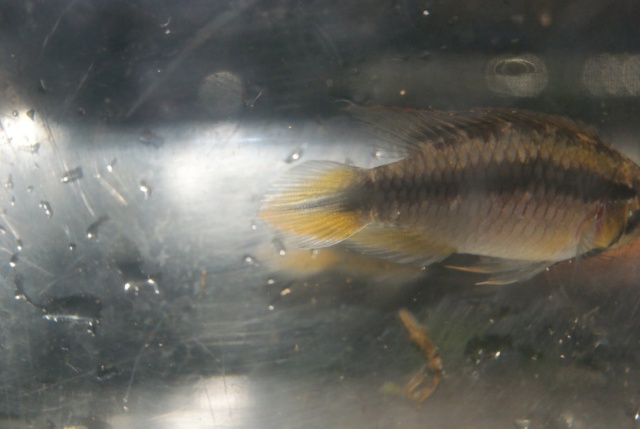
and here is a link to a website that shows a picture of a gephyra that resembles mine. http://www.apistogramma.israquarium.co.il/FishIndex/Apistogramma_gephyra.html
I just make new photos of this fish. I always have a doubt about his identity because he does not look like gephyra that I know but it seems that there are two different forms?


and here is a link to a website that shows a picture of a gephyra that resembles mine. http://www.apistogramma.israquarium.co.il/FishIndex/Apistogramma_gephyra.html
- Messages
- 11,214
- Location
- Denver, Colorado, U.S.A.
I believe that this a a population of A. agassizii. Is seems to show scales in the anterior-ventral area of the breast. Like A. pertensis, A. gephyra has an unscaled area on this part of the breast. Your fish shows a very pale white submarginal band on the caudal fin. This is a feature of A. agassizii, not A. gephyra. Your fish also looks very old or very obese.
- Messages
- 11,214
- Location
- Denver, Colorado, U.S.A.
I just looked at the photo on the site that you linked. The top left fish is similar to your fish - a population of A. agassizii, not A. gephyra. The fish below it could be A. agassizii, too.
- Messages
- 126
...This is a feature of A. agassizii, not A. gephyra. Your fish also looks very old or very obese.
Ok, yes he is obese and has always been like that and yet I feed him once a day and very few with a fasting week.
No he is young
I have of fry
- Messages
- 126
Hello,
I modified the environment of my fishes and i see that the female has changed. Two black spots laterals can be observed as with the gephyra but the male has none? the doubt remains!!
The couple had fry that I grow to see if they are hybrids.
look this vidéo
I modified the environment of my fishes and i see that the female has changed. Two black spots laterals can be observed as with the gephyra but the male has none? the doubt remains!!
The couple had fry that I grow to see if they are hybrids.
look this vidéo
- Messages
- 126
Oops! I had not read this topic. I know now that females agassizii can have two black spots lateral.
Sorry
Nicolas
Sorry
Nicolas
- Messages
- 126
Hi,
I continue on this topic by showing you the offspring of this couple.
Is this the confirmation that it is a agassizii??
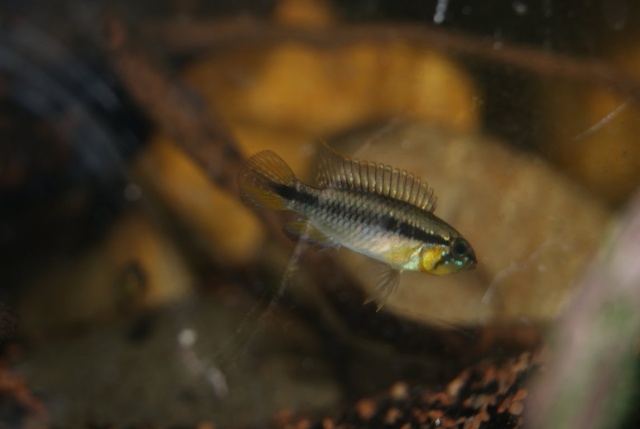
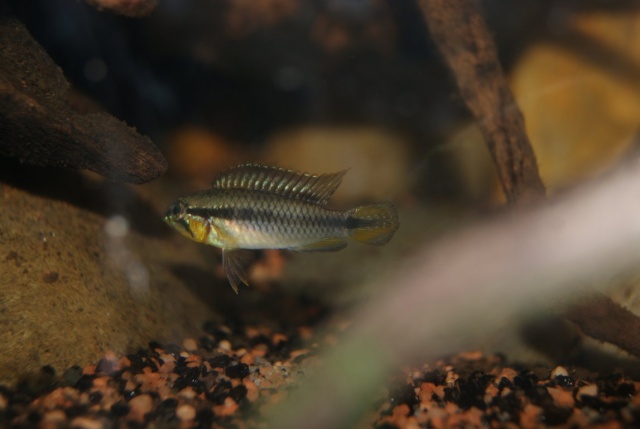
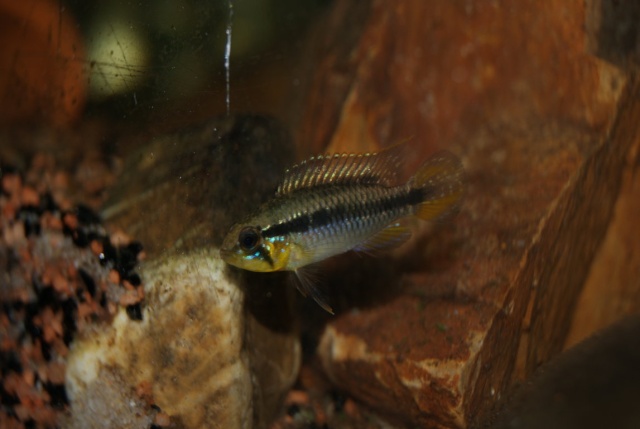
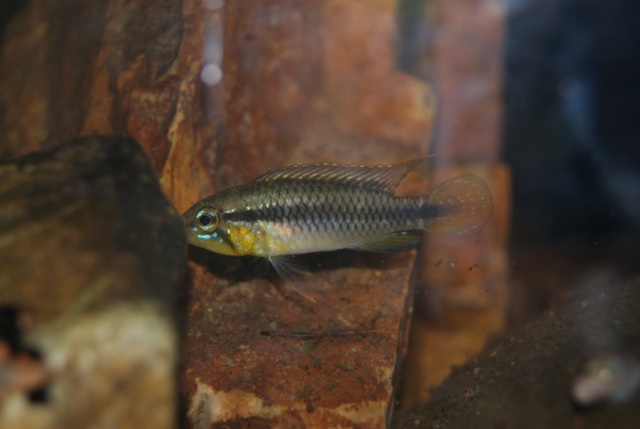
thank you
Nicolas
I continue on this topic by showing you the offspring of this couple.
Is this the confirmation that it is a agassizii??




thank you
Nicolas
- Messages
- 11,214
- Location
- Denver, Colorado, U.S.A.
Nicolas, I still do not believe that this is a form/population of A. gephyra.
- Messages
- 126
Mike thank you for the confirmation.
Occasionally, I will show you photos on the evolution of fish.
Occasionally, I will show you photos on the evolution of fish.
Similar threads
- Replies
- 46
- Views
- 4K
- Replies
- 6
- Views
- 1K
- Replies
- 45
- Views
- 5K

